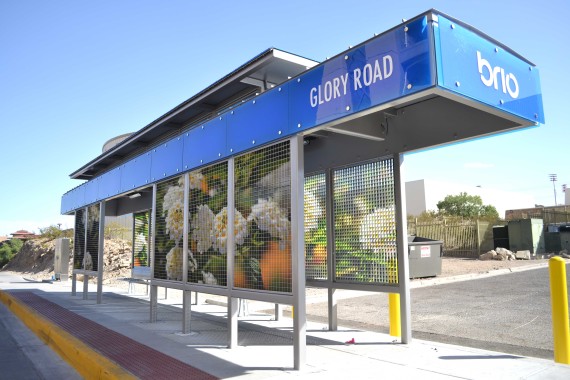Editor’s note: This is part one of a three-part series.
Wi-Fi connection will be available for riders on the new rapid transit system (RTS), which is a part of Sun Metro.
The system features new technology and hopes to attract millennial users during their commute throughout transit routes.
There will be a new Mesa Street Brio route, along with three other planned RTS routes on Alameda Avenue, Dyer Street and Montana Avenue, which will provide its riders with the ability to use free internet connection.
According to Sun Metro officials, the RTS is an affordable and similar option to using a rail line.
With money provided by the federal government and city council support, the Brio RTS service gives commuters in El Paso a compelling option to choose public transportation.
For the Mesa corridor, the Federal Transit Administration contributed $13.5 million and the Texas Department of Transportation granted $6.1 million for its development. The route proceeds from Resler, where it connects with the Glory Road Transfer Center and ends in the downtown center.
According to Sun Metro officials, the bus routes will provide 10 minute service during peak commuting hours, 6 a.m. to 9 a.m. and at 3 p.m. to 6 p.m. Monday through Friday.
Sun Metro spokesperson Laura Acosta explained that while providing new technology features, the agency looked into the wants and needs of millenials.
“Sun Metro is always trying to support the community, but also the students,” Acosta said. “Millennial communities are looking at public transportation for their commute. In that respect, we look at things like technology, for example the Wi-Fi. The Brio will help students get to the station and never break connection.”
Students at UTEP agreed that the installation of rapid transit technologic features would benefit riders, but did not necessarily attract them to using the public transportation system.
“I would still prefer using my car,” said Karen Pacheco, sophomore kinesiology major. “If it happens that you’re late for class, you will have to depend on the bus.”
Pacheco explained that the features are good, but do not compare to the safety and comfort she has in using her car.
Another UTEP student explained that he only uses public transportation to get to school because of the scarcity in parking spaces that students experience when they are not able to purchase a permit. Not able to park in perimeter parking lots, students choose to park in residential areas such as Sunset Heights, Kerbey Street or by the Glory Road Transfer Center.
Other options include the spots along Blanchard Avenue next to Taco Bell. The available public parking there was once free, but since the spring semester parking meters have been installed.
Juan Cárdenas, a graduate student in economics, said that two weeks ago he began taking the bus since he had always used his car as a way for transportation.
His route takes him to Mesa Hills where the Brio route passes through. With a new option, he said that he may consider using the service, but not because of the Wi-Fi feature.
“It’s not a big concern for me, but for others it would be,” he said.
Cárdenas explained that with the 10-minute intervals between buses, he would have an easier time planning his trip.
“I wouldn’t have to worry about waiting and planning by the half hour,” he said. “The new bus system will help.”
Aaron Montes may be reached at [email protected].







